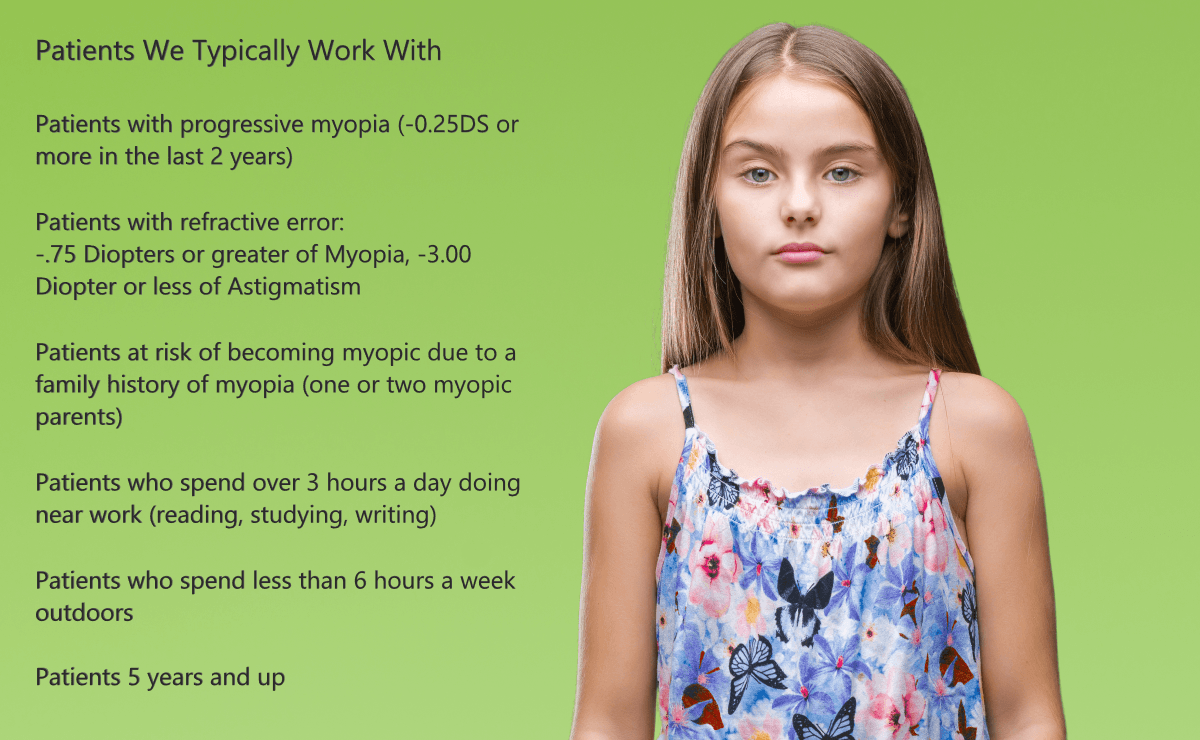NEW YORK MYOPIA MANAGEMENT
There are several methods being studied that have been shown to slow the progression of Myopia
Advanced Orthokeratology
A methode for nearsighted correction that eliminates or reduces the need for glasses or contact lenses, while slowing down further progression
Learn moreAtropine
Studies have shown that daily medical treatment can be effective at slowing down the progression of myopia
Learn moreSpecialty contact lenses
Recent studies show promising results at slowing the progression of myopia. Available in Soft or GP materials.
Learn moreWhat is Myopia Management?
“Myopia management” is a series of treatments that eye doctors use to slow the progression of myopia in children. Our myopia management treatments can address the causes linked to the development and progression of myopia. Several studies have indicated that these treatments successfully slow down the progression of nearsightedness in children and teens.
New York Myopia Control, the Myopia Management Center At Eye Q Optometrist currently offers several different customized treatment options to slow the progression of myopia. Dr. Abraham Zlatin works closely with each family and customizes treatment programs for every child based on their unique needs.
The treatments offered include:
Patients are carefully monitored by Dr. Zlatin and reviewed every 4-12 months to assess the efficacy of the chosen treatment modality.
The Myopia Management Center At Eye Q Optometrist is a Myopia Management practice that offers evidence-based treatment to prevent the onset or reduce the progression of myopia in pediatric patients.
Because we stay on the forefront of the latest research, you can be sure that The Myopia Management Center At Eye Q Optometrist is maximizing the chances of your child’s success.
"The number of nearsighted individuals world wide has become a concern for eye care professionals in recent years. With a steady increase in both the level of nearsightedness and the amount of new cases each year increasing at an alarming rate."
Genetics
The risk of myopia increases when parents are myopic.1
- 22% when neither parent is myopic
- 31% when one parent is myopic
- 46% when both parents are myopic
Behavioural Influences
Development of myopia has a number of contributing factors:
- Prolonged “near tasks” like reading and screen time2 3
- Lack of outdoor activity2 4
- Poor lighting levels2 4
References:
1 Morgan P. Is Myopia Control The Next Myopia Revolution? The Optician 2016.
2 Wolfssan JS, Callosi A, Cho P, et al. Global Prevalence of Myopia and High Myopia and Temporal Trends from 2000 through 2050. Ophthalmology. 2016; 123:1036-42.
3 Glifford P, Glifford KL. The Future of Myopia Control Contact Lenses. Optom Vis Sci.; 93:336-43.
4 Rose KA, Morgan IG, Ip J, et al. Outdoor Activity Reduces the Prevalence of Myopia in Children. Ophthalmology 2008; 115:1279-1285.

